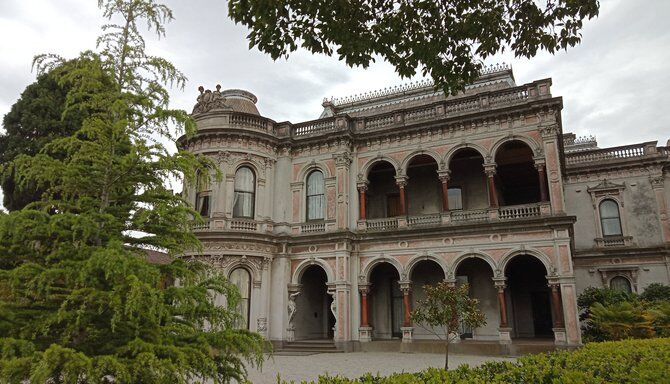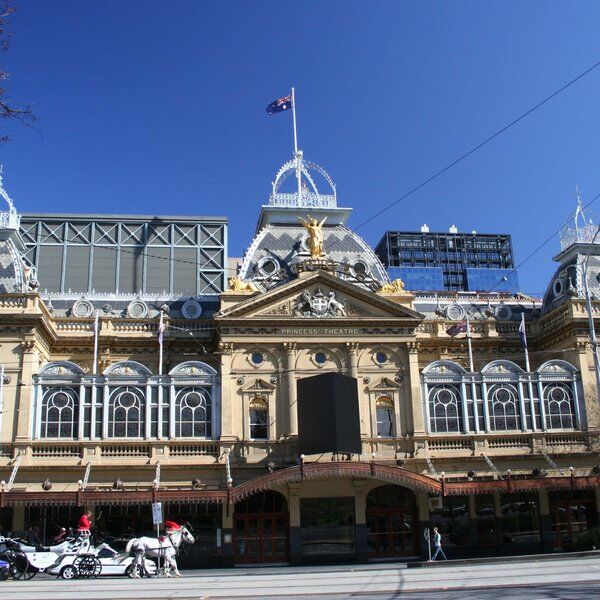Discover Labassa Mansion
Ever wondered what it would feel like to step into the pages of a 19th-century fairy tale? Welcome to Labassa Mansion in Melbourne—this 35-roomed French Second Empire-style beauty is adorned with intricate stained glass windows, opulent Japanese wallpapers, and a rare trompe l’oeil ceiling that will leave you staring upward in awe.
However, Labassa Mansion isn’t your run-of-the-mill historic home. It has a story that’s as extravagant as its decor. Originally a private residence for Melbourne’s elite, it later became a bohemian sanctuary before its rebirth as a National Trust treasure, teeming with visitors. It's safe to say, this stately home has seen it all.
The History of Labassa Mansion
Humble Beginnings: Sylliott Hill
Labassa’s story begins in 1862, though back then, it went by the much less glamorous name of Sylliott Hill. Built as an eight-room country house for Judge Richard Billing, it acted as a relaxing escape from Melbourne’s busy, greyscale city life. The quiet years didn’t last long, though. In 1883, prominent figure of the Cobb & Co. empire, Alexander William Robertson leased the property and soon after purchased it outright.
Ontario: The Robertson Era
Robertson wasn’t content with modest luxury. By 1889, he commissioned German-born architect John A. B. Koch to transform the property into a French Second Empire-style mansion worthy of royalty. The result? A lavish 35-room mansion boasting expansive views over Port Phillip Bay. Robertson even added cast-iron gates reminiscent of Buckingham Palace, because why not?
This extravagant abode—renamed Ontario—quickly became a symbol of Melbourne’s opulence during the late 19th century. Unfortunately, Robertson passed away before he could fully enjoy his luxurious creation.
A New Name and a New Owner
In 1904, John Boyd Watson II, heir to a mining fortune, purchased the property and gave it the name we know today: Labassa Mansion. Watson, known for his flair for entertaining, hosted grand dinner parties complete with printed menus. His tenure marked the mansion’s peak as a social hotspot, with the glittering elite gathering within its ornate walls.
But by 1911, Watson had passed away, and Labassa’s golden age as a family mansion came to an end.

Labassa’s Declining Decadence
Labassa’s transformation into flats in the 1920s marked a new chapter in its story. The once-glamorous residence became home to residents of more modest means, including Hollywood’s first Australian silent film star, Louise Lovely. Even as a block of flats, Labassa retained its dramatic flair, hosting extravagant parties and even rumored spy activity during World War II!
Pssst! Keep an eye on March 21, 2025 when there is a unique event being hosted at the mansion called ‘Louise Lovely’s Labassa’. The event delves into the life of Louise Lovely and includes refreshments, a talk, and a guided tour highlighting the mansion in the 1930s.
By the 1960s and 1970s, Labassa had become a hub for artists, musicians, and bohemians, despite its state of neglect. The mansion’s eclectic community included singer-songwriter Hans Poulsen (who shared the tower with his pet crow) and comedian Jane Clifton, who described her time there as her “long-haired moon-mother cookie-baking phase.”
A National Treasure Restored
The National Trust of Australia stepped in to save Labassa in 1980, halting its decline and preserving its rich history for future generations. Painstaking restoration efforts returned the mansion’s interiors to their 19th-century glory, with its gilt-embossed wallpapers, decorative ceilings, and stained glass windows looking as fabulous as ever.
Today, Labassa is more than just a historic home—it’s a living, breathing museum of Melbourne’s past. Other historic homes in the area managed by the National Trust include the Rippon Lea Estate, Como House and Garden, and La Trobe’s Cottage.
Why Labassa Mansion Stands Out
Labassa Mansion, a stunning example of High Victorian architecture, was designed to make an indelible impression. Originally crafted by J.A.B. Koch for Robertson, the mansion combines intricate European influences with Melbourne's late 19th-century aesthetic.
Interior Elegance
Inside, Labassa boasts opulent features that showcase its grandeur. Gilded and embossed wallpapers adorn the walls, and intricate stencil work enhances the mahogany paneling. A rare trompe l'oeil ceiling creates an illusion of a classical atrium, and the grand staircase is graced by a magnificent stained-glass window depicting the four seasons.
The Drawing Room, a masterpiece of Rococo design, stands out with its light pastel tones and intricate carvings, contrasting the darker, moodier styles found in other rooms. Meanwhile, the Dining Room and other living spaces are enriched with decorative ceilings and papier-mâché-style embossed wallpapers.
Exterior Grandeur
Externally, Labassa is equally impressive. Arcaded verandahs with Corinthian columns and classical marble decorations form a striking façade. The mansion’s swags on the columns and other ornamental details are rare, even among Melbourne’s historical homes.
Event Hosting and Weddings
Labassa’s interiors provide a breathtaking setting for various events. The Drawing Room is ideal for glamorous wedding ceremonies or cocktail events, while the Dining Room suits intimate gatherings or corporate dinners.
Outdoors, the manicured garden and front façade offer picturesque backdrops for ceremonies. Exclusive venue access ensures privacy for any event, making it a sought-after location for special occasions.

Visiting Labassa Mansion
Labassa Mansion is open to visitors from 10:30 am to 4:00 pm (last entry at 3:30 pm) on the third Sunday of each month (except December), with guided tours, self-guided options, and special events available. There is also a tea room onsite, which is open from 10:30 am to 3:30 pm. But note that pre-booking is highly recommended. Whether you’re intrigued by its architectural history or the stories of the 700+ residents who once called it home, Labassa offers a rich experience for all.
Admission:
- Adults: $25
- Concessions: $20
- Children: $15
- Families: $50
- National Trust Members: Free
Guided Tour Options:
Tower Tours: Experience breathtaking views of the estate during one of the exclusive tower tours, available hourly from 10:45 am to 3:45 pm. Other tours include:
- 11:00 am: Interior House Tour
- 12:00 pm: "Who’s been living in this house?" Tour (includes upstairs)
- 1:00 pm: Exterior Tour
- 2:00 pm & 3:00 pm: Interior House Tours
Explore Beyond Labassa Mansion with CityDays
While Labassa Mansion offers a glimpse into Melbourne’s opulent past, there's so much more to discover in Melbourne! At CityDays, we offer immersive scavenger and treasure hunt tours that take you through some of Melbourne’s most iconic landmarks and hidden gems.
Our interactive tours are perfect for team-building exercises, whether you're local or visiting from afar. Not only do these tours engage you with the city’s rich history, but they also provide a fun and competitive way to explore Melbourne with your friends, family, or colleagues.
Our team-building activities aren’t limited to Melbourne either—we offer similar experiences in cities across the globe, making CityDays your go-to for unique urban adventures anywhere in the world.
So why not start your journey at Labassa Mansion and let the adventure continue with CityDays?










